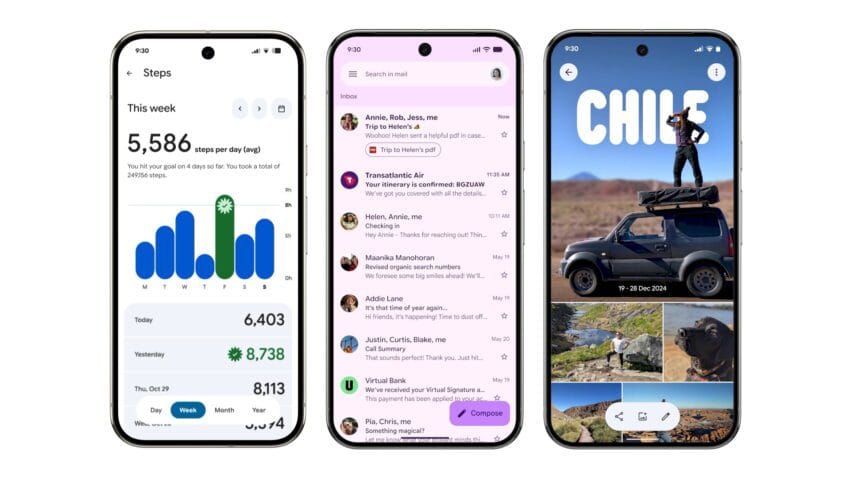
What Google Material 3 Expressive Redesigns Are
Google is gradually rolling out its Material 3 Expressive redesign across various applications, enhancing user experience on Android devices.
Introduction to Material 3 Expressive Redesign
In May 2025, Google unveiled its new design language, known as Material 3 Expressive. This redesign aims to create a more personalized and dynamic user experience, aligning with contemporary design trends and user expectations. The rollout has been methodical, with updates appearing in several Google applications over the months. This article will detail what features are currently available, what users can expect in the future, and the overall implications of this redesign on Android phones.
Key Features of Material 3 Expressive
The Material 3 Expressive redesign introduces several innovative features that enhance the aesthetics and functionality of Google apps. Some of the key aspects include:
- Dynamic Color: The new design allows for a more personalized interface through dynamic color adjustments that adapt to user preferences and device themes.
- Improved Typography: Enhanced typography options provide better readability and a more modern look across applications.
- Fluid Motion: The redesign incorporates smoother transitions and animations, making navigation more intuitive and enjoyable.
- Customizable Widgets: Users can expect new and improved widgets that can be tailored to fit individual needs and preferences, allowing for a more personalized home screen experience.
- Accessibility Enhancements: Material 3 Expressive places a strong emphasis on accessibility, ensuring that design choices cater to all users, including those with disabilities.
Current Rollout Status
As of August 2025, the Material 3 Expressive redesign has been gradually implemented across various Google applications. Here’s a list of apps that have already received updates:
- Google Photos: The redesign has introduced a fresh look with enhanced color palettes and typography, making it easier for users to navigate and manage their photo libraries.
- Google Keep: Users can now enjoy a more vibrant interface with customizable notes and improved organization features.
- Google Calendar: The updated design includes new widgets and better integration of colors for events, making scheduling more visually appealing.
- Gmail: The email client has received a significant facelift, with an emphasis on clarity and usability, alongside new features that make email management more efficient.
- Google Maps: The redesign enhances the navigation experience with clearer icons and a more intuitive layout, helping users find their way more easily.
What’s Still to Come
While many applications have already embraced the Material 3 Expressive redesign, several others are expected to receive updates in the coming months. Google has not officially announced a timeline for these updates, but users can anticipate enhancements in the following applications:
- Google Drive: A redesign is expected to improve file management and accessibility.
- Google Docs: Anticipated updates may include new formatting options and a more streamlined interface.
- Google Assistant: Enhancements may focus on voice interaction and visual feedback.
The Impact of Material 3 Expressive on User Experience
The rollout of Material 3 Expressive is more than just a visual update; it represents a significant shift in how Google approaches user experience. By focusing on personalization and accessibility, Google is acknowledging the diverse needs of its user base. This redesign is expected to have several implications:
- Increased User Engagement: With a more visually appealing and user-friendly interface, applications are likely to see higher engagement rates as users enjoy a more intuitive experience.
- Brand Cohesion: The consistent application of the Material 3 design language across Google’s ecosystem can strengthen brand identity and make switching between apps more seamless.
- Competitive Edge: As other tech companies also innovate their design languages, Google’s early adoption of Material 3 Expressive may provide a competitive advantage in attracting and retaining users.
Conclusion
The Material 3 Expressive redesign signifies a pivotal moment in Google’s design philosophy, focusing on a more personalized, dynamic, and accessible user experience. With a gradual rollout across various apps, users can expect a more cohesive and engaging interaction with their favorite Google services. As additional applications receive updates, the full potential of Material 3 Expressive will become increasingly evident, shaping the future of app design on Android devices.
what google material 3 expressive redesigns are — Source: Original reporting.
what google material 3 expressive redesigns are — Source: Original reporting.
Source: Original reporting
- Further reading: related insights.
- Further reading: related insights.
- Further reading: related insights.
Was this helpful?
Last Modified: August 18, 2025 at 11:18 am
1 views














